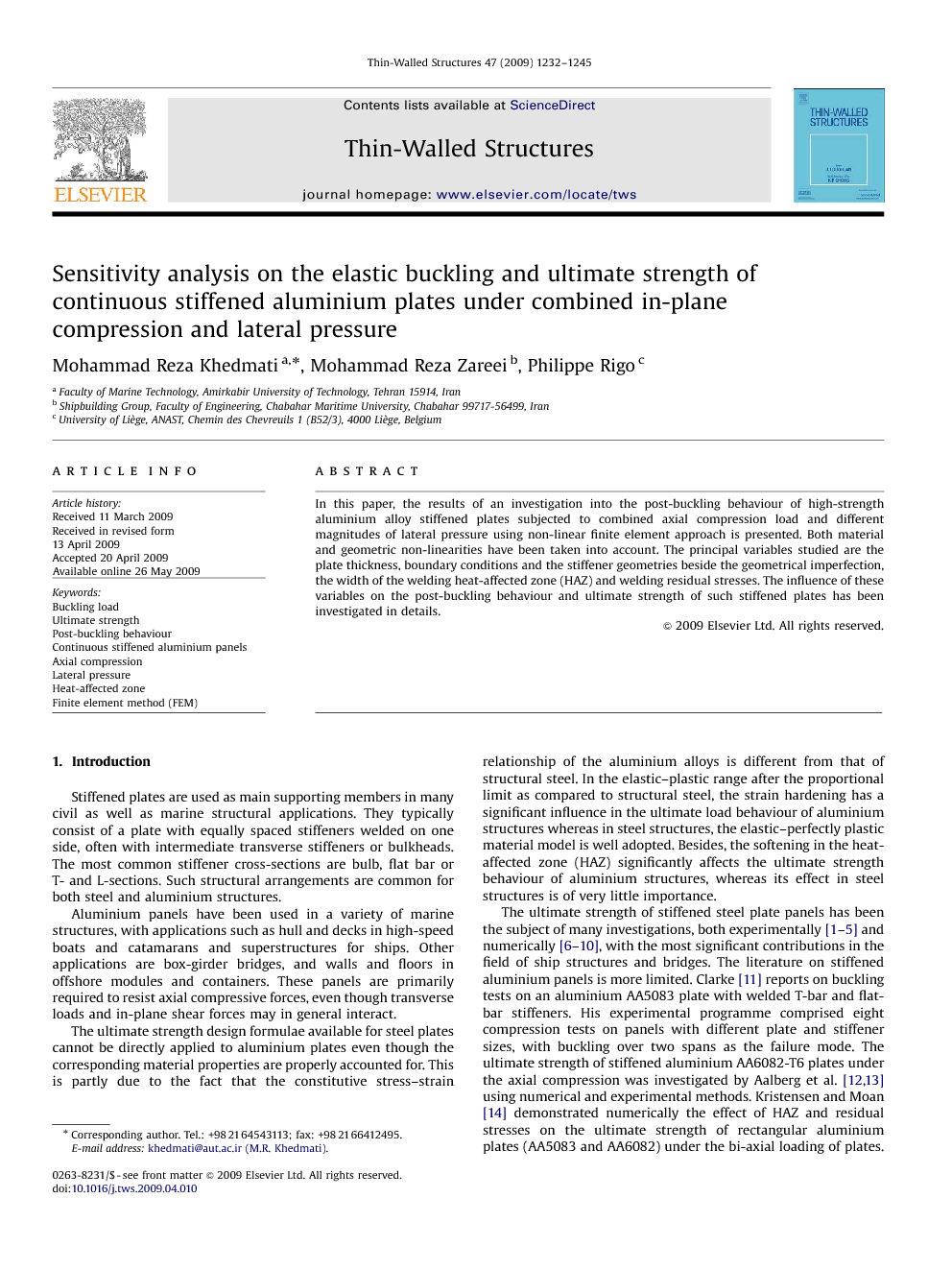ترجمه فارسی عنوان مقاله
تجزیه و تحلیل حساسیت بر روی کمانش الاستیک و استحکام نهایی صفحات آلومینیومی سخت مداوم تحت ترکیب فشرده سازی و فشار جانبی هواپیما
عنوان انگلیسی
Sensitivity analysis on the elastic buckling and ultimate strength of continuous stiffened aluminium plates under combined in-plane compression and lateral pressure
| کد مقاله | سال انتشار | تعداد صفحات مقاله انگلیسی |
|---|---|---|
| 26079 | 2009 | 23 صفحه PDF |
منبع

Publisher : Elsevier - Science Direct (الزویر - ساینس دایرکت)
Journal : Thin-Walled Structures, Volume 47, Issue 11, November 2009, Pages 1232–1245
ترجمه کلمات کلیدی
کمانش بار -
قدرت نهایی -
رفتار پس کمانش -
پانل های آلومینیومی سخت پیوسته -
فشرده سازی محوری -
فشار جانبی -
حرارت تحت تاثیر منطقه -
روش المان محدود ()
() -
کلمات کلیدی انگلیسی
Buckling load,
Ultimate strength,
Post-buckling behaviour,
Continuous stiffened aluminium panels,
Axial compression,
Lateral pressure,
Heat-affected zone,
Finite element method (FEM),

